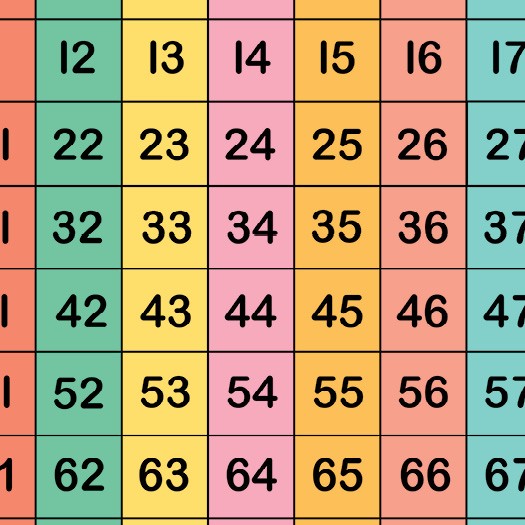The Eights Amble

Begin by starting at zero. Add eight and step on that number. Continue to 96. Next take the Eights’ Amble backwards from 96. Afterward, take the Eight’s Amble going forward or backward starting at any number.

Begin by starting at zero. Add eight and step on that number. Continue to 96. Next take the Eights’ Amble backwards from 96. Afterward, take the Eight’s Amble going forward or backward starting at any number.

Begin by starting at zero. Add nine and step on that number. Continue throughout the 99 number grid. Next take the Nines’ Step backwards from 99. Afterward, take the Nines’ Step going forward or backward starting at any number.

Begin by starting at zero. Add ten and step on that number. Continue throughout the 90 number grid. Next take the Tens’ Traipse backwards from 90. Afterward, take the Tens’ Traipse going forward or backward starting at any number.

Put black construction paper down on the numbers 1, 2, 11, and 12. This makes a 2×2 square and the square number four. Have students count the four squares to discover that 2×2 is actually 4. Ask “What is the next square number? Who can guess?” Students can find the answer by covering the 3 […]

Follow the directions for Super Squares activity. After each square has been created, ask “what is the square root of the square number 4, 9, 16,” or whatever square number you are discussing. The square root is the number of rows or columns that make the square number. Ask “Who can figure out the square […]

A prime number is a natural number that is greater than one and only has two factors, one and itself. Use the Sieve of Eratosthenes to find all the prime numbers up to 99. 1. Stand on the number one. One is special—it is neither prime nor composite. 2. Step to the number two. This […]

Have students begin on START HERE. Have them hop on each block while they say each number out loud.

Have the student throw a bean bag onto the mat and hop to pick up the bean bag, saying each number as they hop.

mm169.jpg

Create notecards with subtraction questions or print off subtraction worksheets using the numbers of the mat. Have students hop on the mat to solve the problems. Example: 700 – 200 = ? The student will start at 700 and hop backward two times to solve the question.